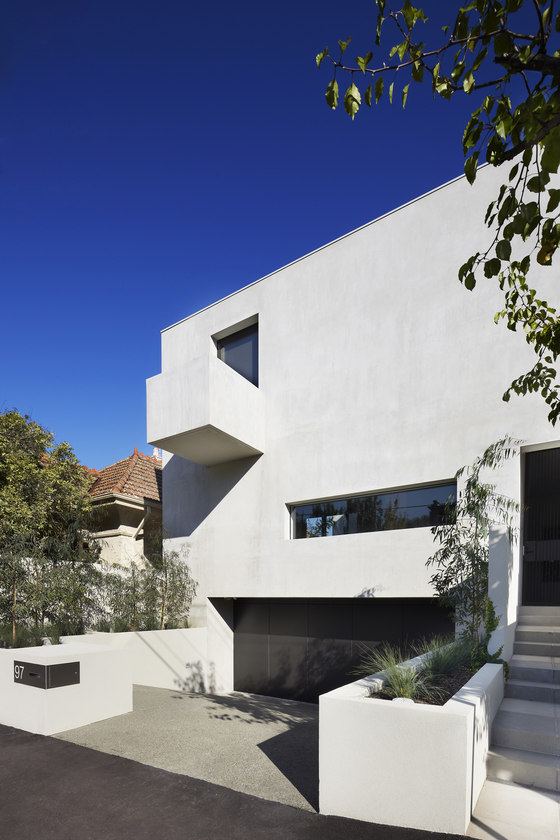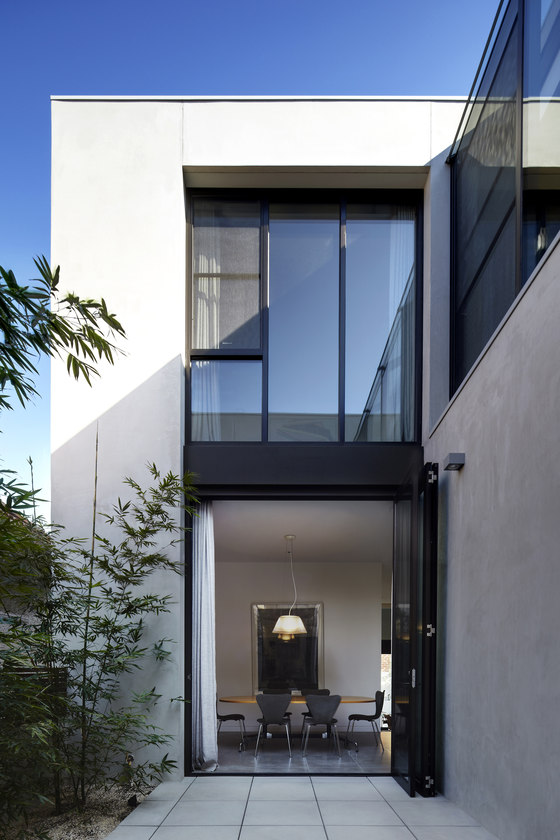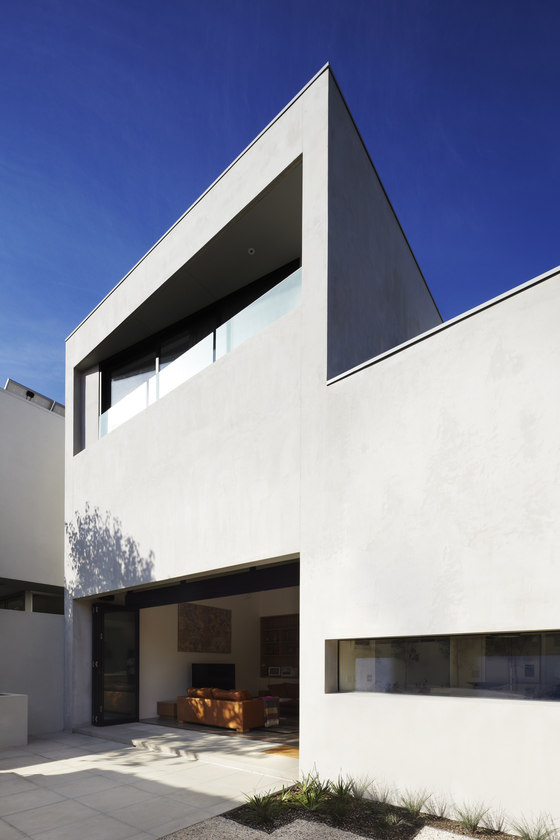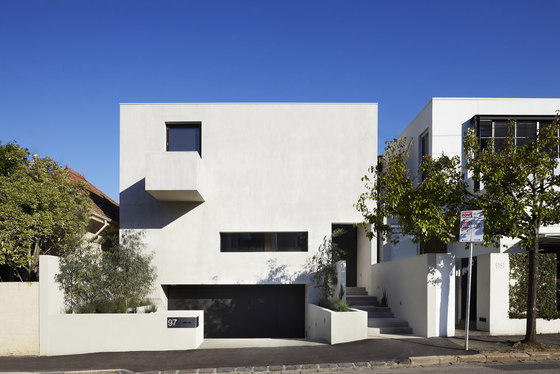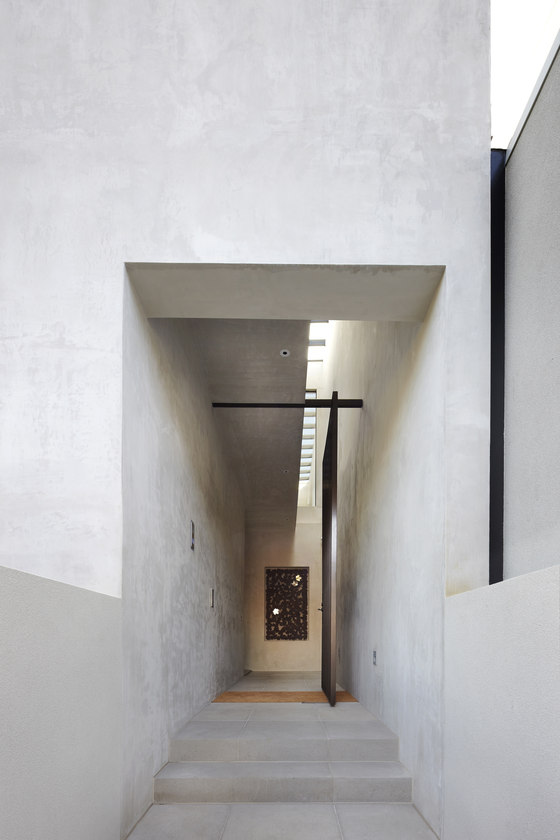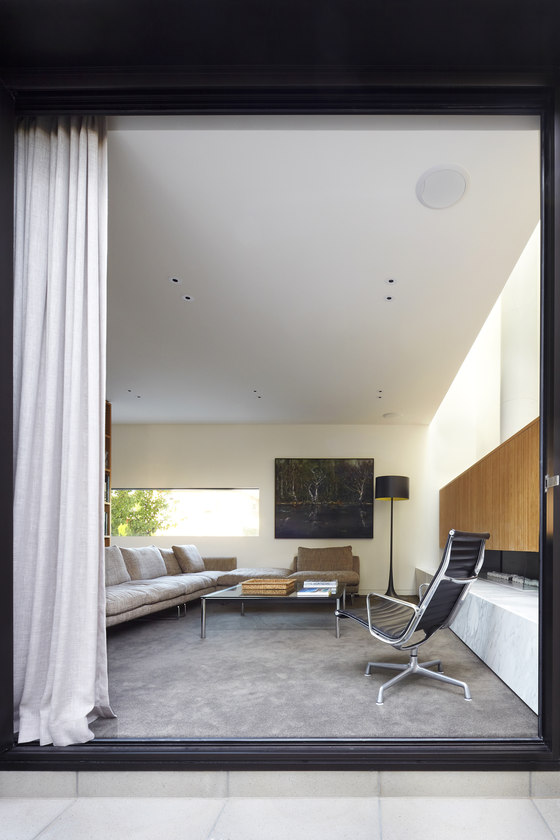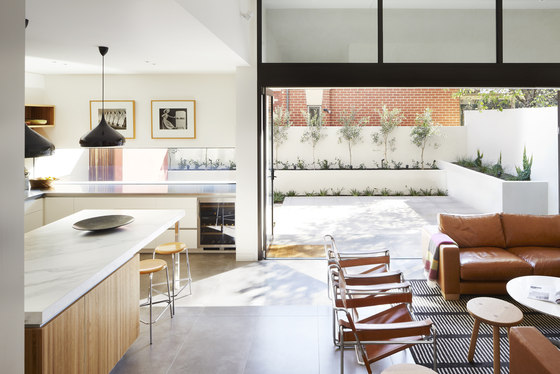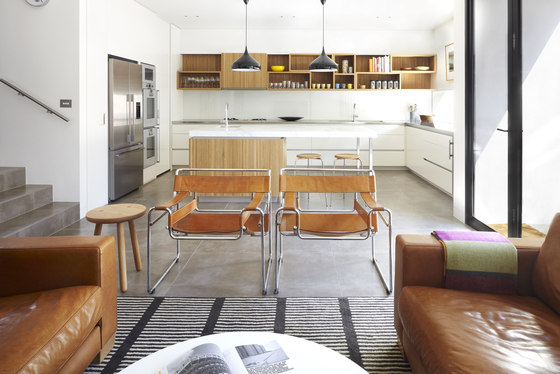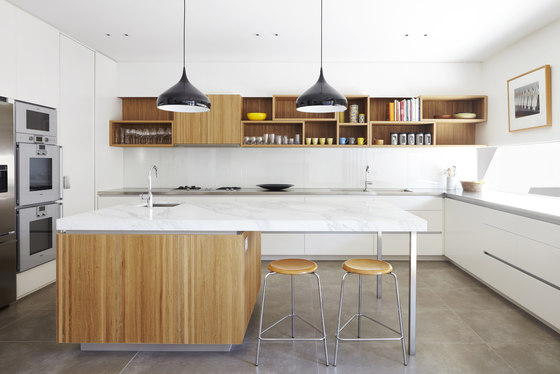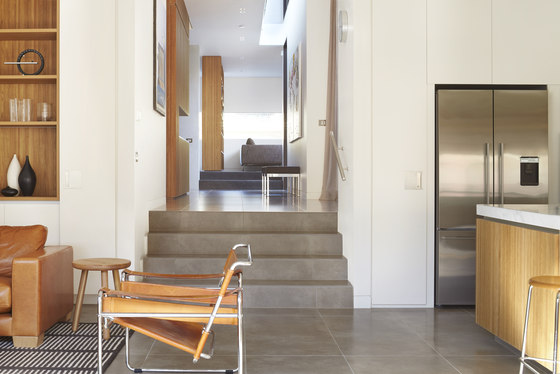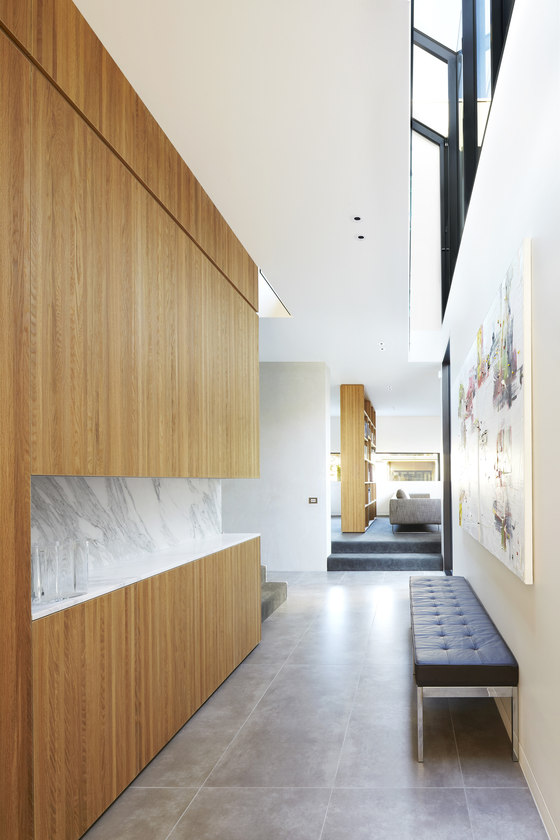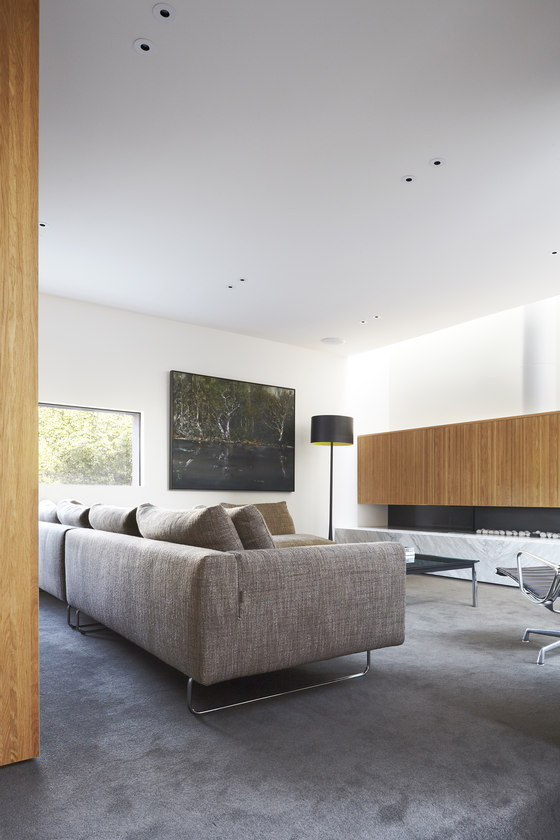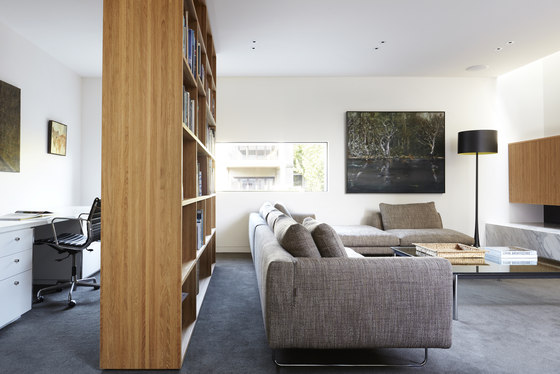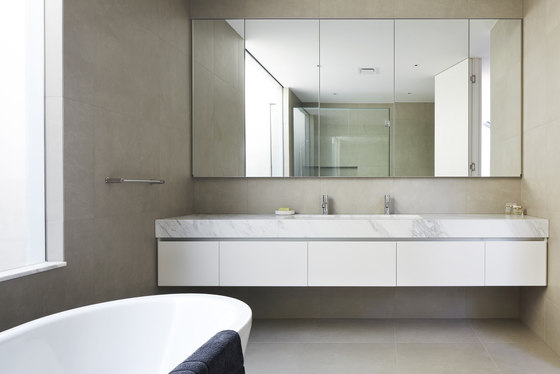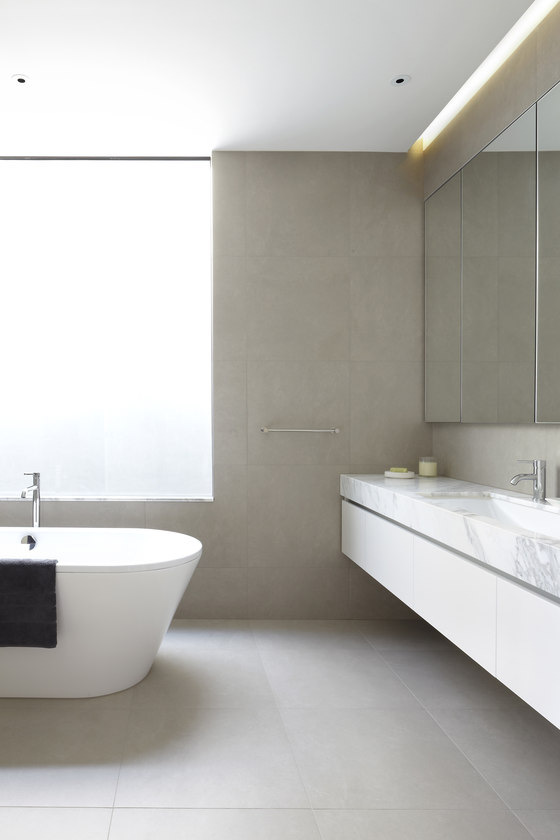The concept behind Residence M was influenced by some of the more significant architecture in Australasian history. The home reveals the unerring simplicity of Robin Boyd, the inventiveness of David McGlashan and has taken cues from House N by Sou Fujimoto Architects in Oita, Japan. Modernity, innovation and practicality have all lended a voice in the design of this residence, in which every challenge was met with a unique and thought-out design solution.
Residence M sits on a small site, mandating an inventive approach that could maximise the yield. Unlike the customary introverted house surrounded by outdoor space, Residence M expands its walls to sit almost flush to the property boundaries, creating an unexpectedly big-small house that brings the outdoors inside through two internal courtyards. The home’s south- and south-west-facing courtyards are critical to the design in more ways than one. In order to function, the outdoor courtyards had to feel like an interior living space, which was achieved with extended set downs creating continuous movement and a consistent flow of materials inside and out.
Residence M’s design required careful management. The home could figuratively be described as a cube that has spaces carved out of it, and each carving not only resulted in concrete shapes but also sculpted the air, shadows and light. Voids were strategically created throughout to distinguish different living spaces the way most designers use walls, which allowed the architects to work with fresh natural light, cross-flow ventilation and long breezeways. Nor did the architectural team allow floors to encroach into the sense of space, using elements that transcend both the ground and first levels to give the interior the feeling of one, expansive volume.
The sunlight throughout is diffused through glazed windows and filtered via clever angles, softening the severity of the harsh Australian sun and making the home fresh and light. In keeping with modern principles, the palette inside is not only minimal, but rigorously consistent throughout, ensuring the home’s integrity as a strikingly designed whole. Designing for modernity risks austerity, however Residence M is anything but.
The architects have considered the design of what is, after all, a family home; the wisdom to preserve the harmony of both parents and children manifested in a floor plan that, like Robin Boyd’s House II, diplomatically distinguishes between living spaces for adults and children. This light-filled, gentle form creates a serene hearth. The concept behind Residence M was influenced by some of the more significant architecture in Australasian history. The home reveals the unerring simplicity of Robin Boyd, the inventiveness of David McGlashan and has taken cues from House N by Sou Fujimoto Architects in Oita, Japan.
Modernity, innovation and practicality have all lended a voice in the design of this residence, in which every challenge was met with a unique and thought-out design solution. Residence M sits on a small site, mandating an inventive approach that could maximise the yield. Unlike the customary introverted house surrounded by outdoor space, Residence M expands its walls to sit almost flush to the property boundaries, creating an unexpectedly big-small house that brings the outdoors inside through two internal courtyards.
The home’s south- and south-west-facing courtyards are critical to the design in more ways than one. In order to function, the outdoor courtyards had to feel like an interior living space, which was achieved with extended set downs creating continuous movement and a consistent flow of materials inside and out. Residence M’s design required careful management. The home could figuratively be described as a cube that has spaces carved out of it, and each carving not only resulted in concrete shapes but also sculpted the air, shadows and light.
Voids were strategically created throughout to distinguish different living spaces the way most designers use walls, which allowed the architects to work with fresh natural light, cross-flow ventilation and long breezeways. Nor did the architectural team allow floors to encroach into the sense of space, using elements that transcend both the ground and first levels to give the interior the feeling of one, expansive volume.
The sunlight throughout is diffused through glazed windows and filtered via clever angles, softening the severity of the harsh Australian sun and making the home fresh and light. In keeping with modern principles, the palette inside is not only minimal, but rigorously consistent throughout, ensuring the home’s integrity as a strikingly designed whole.
Designing for modernity risks austerity, however Residence M is anything but.
The architects have considered the design of what is, after all, a family home; the wisdom to preserve the harmony of both parents and children manifested in a floor plan that, like Robin Boyd’s House II, diplomatically distinguishes between living spaces for adults and children. This light-filled, gentle form creates a serene hearth.
CHT Architects
